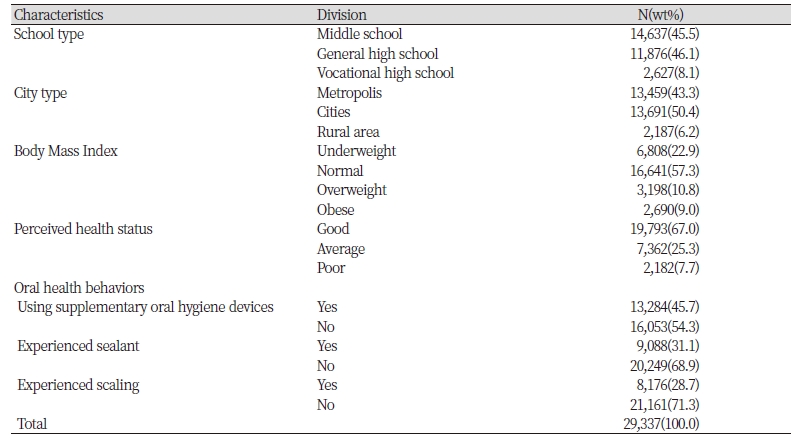Abstract
Objectives: This study analyzed the relationship between BMI (body mass index), perceived health status, and oral health behaviors of schoolgirls. Methods: This study utilized data from the 13th (2017) Korea Youth Risk Behavior Web-Based Survey. A total of 29,337 schoolgirls were analyzed. Statistical analysis was performed using PASW Statistics 21.0 (SPSS Inc., Chicago, IL, USA). Results: Compared to the obese group, the rate of being recognized as healthy was 1.882 times higher in the normal-weight group and 1.623 times in the underweight group. The rate of using supplementary oral hygiene devices was 1.383 times higher in the underweight group and 1.091 times in the normal-weight group than in the obese group. Compared to the obese group, the experience rate of the sealant was 1.407 times in the underweight group. Compared to the obese group, the scaling experience rate was 1.282 times higher for the underweight group and 1.205 times for the normal-weight group. Conclusions: These results suggest that individual health behaviors are interrelated. There is a need for an integrated approach in the planning and implementation of future health promotion strategies, and it would be useful to design a program that considers health characteristics such as BMI.
Figures & Tables



